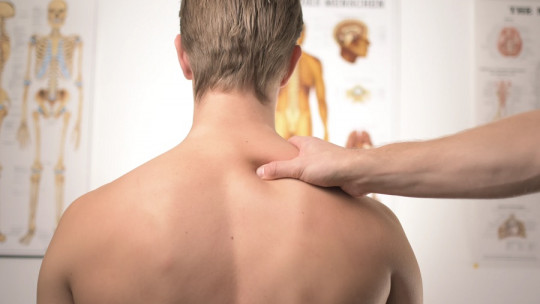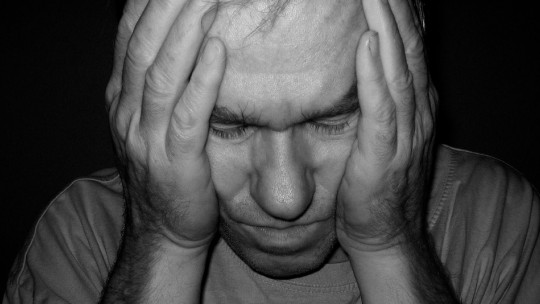We have all experienced physical pain to a greater or lesser degree. However, some people have lost this ability, or have it altered.
Let’s delve into the topic of the asymbolism of pain to see the implications that this pathology entails and what are the causes that may be causing this dysfunction in the perception of pain as we know it.
What is the symbolism of pain?
Pain asymbolism, also known by the medical term analgognosia, refers to an inappropriate reaction to a painful stimulus , due to difficulties in identifying it. Some of these reactions may be not removing the part of the body that is suffering damage from the aversive stimulus (not removing the hand from the fire, for example), not expressing a gesture of pain on the face, or not showing a psychological reaction to the harmful element. .
The expression asymbolia of pain was coined by Paul Schilder and Erwin Stengel. neurologists, psychiatrists and also psychoanalysts, based on a study carried out in 1927. In fact, in some manuals it is possible to find the Schilder-Stengel syndrome to refer to the asymbolia of pain, since as a result of said publication it is also They used their own names as nomenclature for this newly discovered pathology.
The case that these researchers studied was that of a woman affected by sensory aphasia who repeatedly self-harmed, without showing any reaction to the pain she should be feeling in the face of tremendous attacks on her body. Tests were done with electrical stimulation, of increasing intensity, and only in the highest ranks did they obtain a facial response to the aversive stimulus but at no time did he try to get away from the devices.
Symbol of danger
The symbolism of pain It does not refer only to the fact of experiencing a sensation of pain, but also to the search for it. In some ways, it seems that the person suffering from this anomaly would try in every way to try to feel the damage, no matter how incredible it may seem. For this reason, increasingly intense self-harm would be carried out, in an escalation to recover that disappeared sensation, no matter how unpleasant it may be.
And it is that, Although the subject perceives the stimulus that is hurting him, his body is disconnected from the painful response that should be given. so the stimulus loses the aversive component (only at the level of response, since it is still harmful) and consequently the individual tends to experiment more and more, attracted by performing harmful behaviors, which do not cause any pain.
The big problem with this issue is that, although the patient has lost the ability to feel pain, the injuries he is inflicting on himself are real, so can experience serious consequences at an organic level , depending on how intense these behaviors have been. That is why sometimes we also talk about the concept of asymbolia for danger, since they are not aware of the harm they are generating for themselves in their search for the sensation of pain.
Causes
But what is the origin of the asymbolia of pain? This pathology seems to come from organic lesions in the brain , specifically in the left parietal lobe or in both hemispheres at the same time, and more specifically in the supramarginal gyrus, affecting the insula or insular cortex, in the Sylvian fissure. The injury could come from a craniocerebral trauma or through some internal pathology that was affecting said area.
It is considered that the specific area that would be directly involved with the symbolism of pain would be number 43 within Brodmann’s list of areas. When suffering an injury to this region of the cerebral cortex, connections between the sensory system and the limbic system would be eliminated which would explain that patients affected by this pathology do not have the physical capacity to relate the aversive stimulus with the painful reaction to it, since they are not able to process it.
Depending on the severity of the injury, it is possible to suffer a partial or total pain asymbolism, depending on whether the aforementioned connections have been completely destroyed or whether there are still some active neural circuits that are capable of transmitting, even in part. , the information related to the capture of pain in the body’s receptors and thus translating it into a consequent reaction, which will normally be much less than it should, when only part of the intensity of the stimulus is perceived.
Comorbidity
The asymbolism of pain also presents the peculiarity that It can be linked to other pathologies of a different nature. such as Wernicke’s aphasia (difficulties in understanding language), conduction aphasia (problems repeating words), constructive apraxia (loss of the ability to make movement patterns to build elements or draw).
They are not the only disorders that can occur as associated morbidity of pain asymbolism. Others would be ideomotor apraxia (problems carrying out movements designed in the mind), autotpoagnosia (difficulty perceiving the specific position of a part of one’s own body) or aprosody (impaired ability to correctly perform or interpret the sound characteristics of the body). language, that is, prosody).
It is not strange that there is a whole variety of neurological disorders that can appear in the patient at the same time as the symbolism of pain, since we must not forget that these pathologies are caused by a brain injury, so it is not strange that the same Injury affects different areas of the brain that, even though they are contiguous, have very different functions and can therefore trigger symptoms as varied as we have seen.
Other pain disorders
But asymbolia is not the only disorder related to pain. There are others with very peculiar characteristics. For example, we find analgothymia, a pathology in which the patient feels the pain caused by an aversive stimulus , is able to identify and locate him without any problem, and yet he is absolutely indifferent on an emotional level. Both disorders would share a lack of response to pain, but in the second case the sensation is experienced.
Another quite popular disorder due to its symptoms is PLP, or phantom limb pain. This condition manifests itself in some people who have suffered an amputation of one of their limbs, be it an arm or a leg, and yet suffer recurring pain in said part of the body, which is no longer present. It may seem that this pathology escapes logic, but the patient experiences a real sensation and therefore needs a treatment to relieve them.
In fact, one of the techniques used to alleviate the pain of PLP is that of mirrors, in which, by visualizing the healthy limb in front of a mirror, one tries to focus the pain sensations of the phantom limb. Some studies show that this technique helps calm these sensations, causing an improvement in the PLP patient.
The opposite case
And, at the other end of the symbolism of pain, we would find a disorder as common in our society as fibromyalgia , a disease that causes hypersensitivity to pain, without an apparent specific cause and that can also spread to different areas of the body, covering a large part of it. The big problem with fibromyalgia is that it is a very broad disorder, which affects each person differently and therefore it is difficult to generalize an effective treatment.
Also in disorders opposite to the asymbolia of pain we can find the pathology known as hyperalgesia. This disease would be caused by damage to the nervous system and would cause the subject to experience an abnormally high sensation of pain in relation to the aggression of the harmful stimulus that is triggering it.
Finally, Another pathology associated with pain but which is also found at the opposite pole with respect to the asymbolia of pain, would be allodynia. It would also imply an excessive perception of the painful sensation, but in this case it would not be caused by an aversive stimulus, but by a stimulus that in principle should be neutral, such as tactile pressure and even a simple caress in some cases.
Furthermore, allodynia is not only associated with stimuli generated by skin pressure, but can also be caused by thermal sensations, so that contact with a substance at pleasant temperatures could also trigger in the subject a perception of immense pain. , as if the stimulus were at a very low or very high temperature, when in reality it would be at room temperature, so it should not cause any pain.









